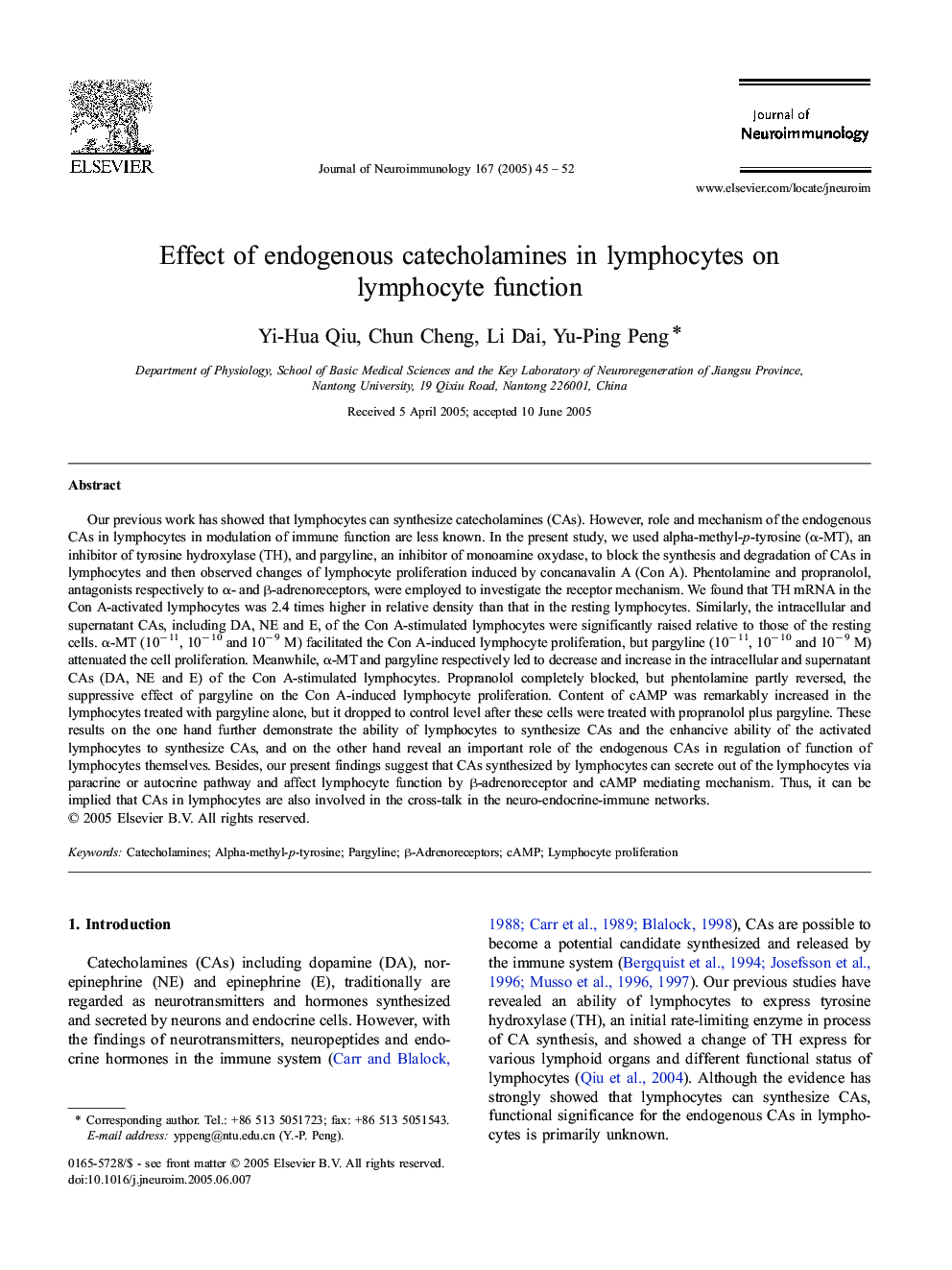| Article ID | Journal | Published Year | Pages | File Type |
|---|---|---|---|---|
| 9194588 | Journal of Neuroimmunology | 2005 | 8 Pages |
Abstract
Our previous work has showed that lymphocytes can synthesize catecholamines (CAs). However, role and mechanism of the endogenous CAs in lymphocytes in modulation of immune function are less known. In the present study, we used alpha-methyl-p-tyrosine (α-MT), an inhibitor of tyrosine hydroxylase (TH), and pargyline, an inhibitor of monoamine oxydase, to block the synthesis and degradation of CAs in lymphocytes and then observed changes of lymphocyte proliferation induced by concanavalin A (Con A). Phentolamine and propranolol, antagonists respectively to α- and β-adrenoreceptors, were employed to investigate the receptor mechanism. We found that TH mRNA in the Con A-activated lymphocytes was 2.4 times higher in relative density than that in the resting lymphocytes. Similarly, the intracellular and supernatant CAs, including DA, NE and E, of the Con A-stimulated lymphocytes were significantly raised relative to those of the resting cells. α-MT (10â 11, 10â 10 and 10â 9 M) facilitated the Con A-induced lymphocyte proliferation, but pargyline (10â 11, 10â 10 and 10â 9 M) attenuated the cell proliferation. Meanwhile, α-MT and pargyline respectively led to decrease and increase in the intracellular and supernatant CAs (DA, NE and E) of the Con A-stimulated lymphocytes. Propranolol completely blocked, but phentolamine partly reversed, the suppressive effect of pargyline on the Con A-induced lymphocyte proliferation. Content of cAMP was remarkably increased in the lymphocytes treated with pargyline alone, but it dropped to control level after these cells were treated with propranolol plus pargyline. These results on the one hand further demonstrate the ability of lymphocytes to synthesize CAs and the enhancive ability of the activated lymphocytes to synthesize CAs, and on the other hand reveal an important role of the endogenous CAs in regulation of function of lymphocytes themselves. Besides, our present findings suggest that CAs synthesized by lymphocytes can secrete out of the lymphocytes via paracrine or autocrine pathway and affect lymphocyte function by β-adrenoreceptor and cAMP mediating mechanism. Thus, it can be implied that CAs in lymphocytes are also involved in the cross-talk in the neuro-endocrine-immune networks.
Keywords
Related Topics
Life Sciences
Immunology and Microbiology
Immunology
Authors
Yi-Hua Qiu, Chun Cheng, Li Dai, Yu-Ping Peng,
